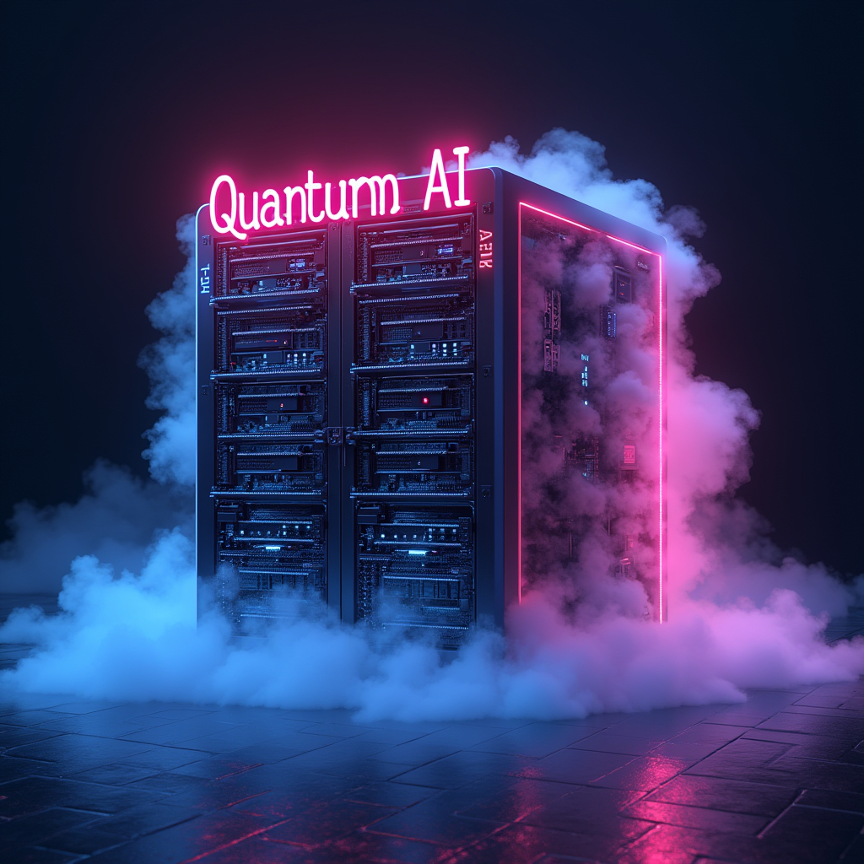Nvidia revealed the Global Research and Development Center for Business by Quantum-AI Technology (G-QuAT). Its core, ABCI-Q, is a next-gen supercomputer exploring quantum-AI convergence, commissioned by Japan’s AIST. ABCI-Q integrates 2,020 Nvidia H100 GPUs, Nvidia Quantum-2 InfiniBand, and the CUDA-Q hybrid framework. It fuses superconducting, neutral atom, and photonic quantum processors for hybrid quantum-GPU processing. G-QuAT aims to accelerate quantum error correction and application development, advancing practical quantum acceleration for healthcare, energy, and finance, offering a shared ground for scientists.
Nvidia today revealed the establishment of the Global Research and Development Center for Business by Quantum-AI Technology, or G-QuAT—a facility poised at the edge of current scientific frontiers. At its heart operates ABCI-Q, a next-generation research supercomputer designed to explore the convergence of quantum and AI technologies on a planetary scale.

Quantum computing is becoming a real thing, and it’s very, very cool.
ABCI-Q is the latest addition to humanity’s growing arsenal of advanced computing systems, dedicated entirely to quantum computing research. As quantum processors begin to supplement AI supercomputers in addressing intricate, multi-dimensional problems, sectors such as healthcare, energy, and finance may find new ways to unlock insights long hidden in data and theory. With the capability to enable quantum-GPU computing at scale, ABCI-Q brings the long-theorized promise of practical quantum acceleration closer to operational reality.
Commissioned by Japan’s National Institute of Advanced Industrial Science and Technology (AIST), the ABCI-Q system is built with 2,020 Nvidia H100 GPUs, connected by the Nvidia Quantum-2 InfiniBand platform—a high-bandwidth lattice designed for communication across accelerated environments.
At the software layer, Nvidia CUDA-Q—an open-source hybrid computing framework—orchestrates the hardware and code required to operate quantum-class workloads across this high-performance infrastructure. CUDA-Q bridges the conventional and the emergent, uniting digital supercomputing and quantum experiments within a single computational fabric.
“Seamlessly coupling quantum hardware with AI supercomputing will accelerate realizing the promise of quantum computing for all,” said Tim Costa, senior director of computer-aided engineering, quantum, and CUDA-X at Nvidia. “Nvidia’s collaboration with AIST will catalyze progress in areas like quantum error correction and applications development—crucial for building useful, accelerated quantum supercomputers.”
At G-QuAT, quantum hardware from multiple modalities is fused into the AI supercomputing framework. The ABCI-Q system integrates a superconducting qubit processor by Fujitsu, a neutral atom quantum processor by QuEra, and a photonic processor by OptQC. This triad enables hybrid quantum-GPU processing—an experimental configuration engineered to explore how these quantum architectures can cooperate within a single computational entity.
“ABCI-Q will enable researchers in Japan to explore the core challenges quantum computing technologies face and speed the path to practical use cases,” said Masahiro Horibe, deputy director of G-QuAT and AIST. “The Nvidia accelerated computing platform in ABCI-Q will empower scientists to experiment with the stepping-stone systems needed to advance quantum computing.”
With G-QuAT and ABCI-Q now operational, the interface between classical and quantum computation has widened—offering scientists a shared ground to test, scale, and evolve the tools of tomorrow.
LIKE WHAT YOU’RE READING? INTRODUCE US TO YOUR FRIENDS AND COLLEAGUES.